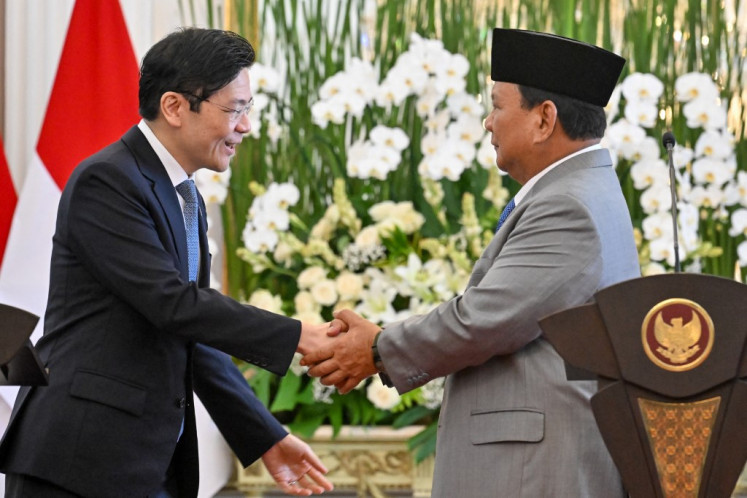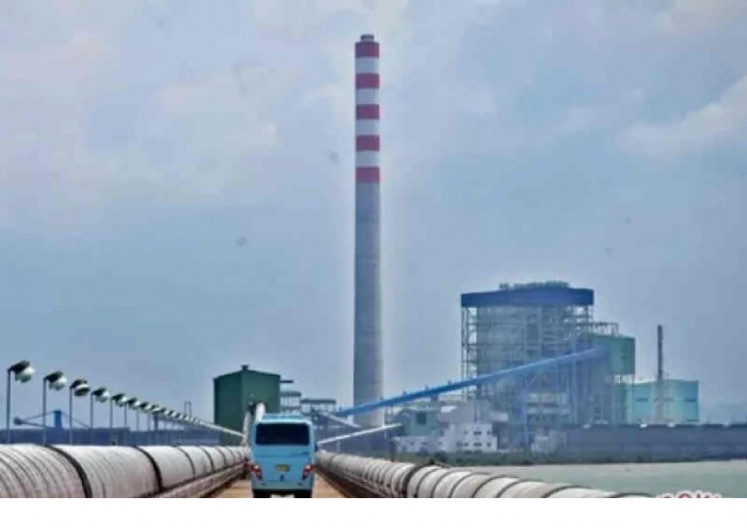Europe catches the 3rd wave of ODI
China Inc
Change text size
Gift Premium Articles
to Anyone

C
hina Inc. is going shopping, but its focus is shifting from resources and infrastructure to services and manufacturing technology, and Europe is likely to be the main beneficiary.
Despite the size of its economy, China is a relatively small player when it comes to overseas direct investment. China accounts for 12 percent of global output, but just 2.1 percent of global total cumulative direct investment.
However that is changing. Outward direct investment (ODI) increased 16.8 percent to US$90.17 billion last year, while foreign direct investment (FDI) rose just 5.25 percent to $117.59 billion. ODI will and is likely to surpass inbound FDI within two years as China moves nearer to its long-pursued goal of achieving balanced capital flows.
Along with the growth in ODI, we are seeing a significant shift in the targets of investment. The first wave of China ODI went principally into primary industries, dominated by coal, oil and metals as China's fast-growing economy is not rich in natural resources. The second wave was investment in infrastructure, including rail, shipping and ports. It is natural for these two waves to be closely linked because it is difficult to reap the full benefit of investment in commodities without having good transport links.
Today we are seeing the third wave. The growth rates in natural resources and infrastructure investment are tailing off, and the acceleration is now in goods and services. In 2013, of the total non-financial ODI 32.7 percent ($29.45 billion) was in the business service sector, 22.4 percent ($20.16 billion) into mining, 15.2 percent ($13.67 billion) into wholesale and retail, 9.6 percent ($8.68 billion) into manufacturing and 7.2 percent ($6.53 billion) into construction.
China's ODI in goods and services are dominated by three industries: automobiles, telecommunications and consumer staples ' mainly food producers. Chinese companies seeking to move up the value chain are buying western manufacturers not just for their brands, products and market share, but also to acquire the intellectual property and skills tied up in the manufacturing process itself. The technology is then frequently used to drive productivity and quality improvements in their domestic operations, where they are selling to increasingly sophisticated and demanding consumers.
Europe is much more exposed to this than the first two waves. In the past five years, Europe was the destination for 14 percent of China's ODI in goods and services compared to only 1 percent in primary industries and 5 percent in infrastructure.
Chinese companies tend not to invest in areas where they already have a comparative advantage. They focus on three key areas of investment: commodities which are used intensively in Chinese production; service companies that could facilitate exports; and companies operating in the same industry as the investors, but which have advanced technology, expertise and brand names.
Mergers and acquisitions (M&A) could accelerate the internationalization of Chinese companies in Europe. There have been a few significant deals, but the total size has been relatively small. The expectation is that more transactions will come. State-owned enterprises (SOEs) are playing a smaller role in international acquisitions as the private sector gains momentum. The state sector reduced its acquisitions in Europe from $11 billion in 2012 to $4.4 billion in 2013, but private companies almost doubled their investments from $964 million to $2 billion in 2013.
Trade between Europe and China has grown by more than 500 percent over the past decade, but investment flows have lagged. The improvement in labor and product market flexibility in at least some European Union member states is making more of Europe look attractive. Spain stands out, having undertaken more labor market reforms than Italy or France. The stabilization of the broad European economy and the return to positive gross domestic product (GDP) growth in most member states will help underpin ODI from China.
Chinese companies are eyeing Western Europe, and they are becoming more active in Central and Eastern Europe and the Mediterranean where the eurozone crisis has pushed labor costs down and created new opportunities for foreign investment. China has announced an ambitious plan to invest $100 billion a year into Eastern Europe by 2015, a target which if achieved would give a significant boost to the eurozone recovery.
The new investment flows are building on the foundations of a well-established trade relationship. Europe buys more goods from China than it buys from any other region. European companies are fulfilling Chinese hunger for cars, planes, chemicals and luxury goods, while Europe imports $385 billion worth of textiles, electronics and other goods from China. Chinese consumers account for over one third of total sales of European luxury brands. Almost one quarter of new cars sold in China are European brands. With some expecting China to become the world's biggest economy by 2030, there will be a lot more up for grabs.
Investment and acquisition to support Chinese companies expanding in Europe is a new activity for Chinese banks as demand for a wide range of sophisticated financial services is continuously increasing. London, Paris and Luxembourg are amongst the first priorities for Chinese banking expansion due to Chinese companies having deep trade and investment connections in these economies. Luxembourg for example, has received the most outbound investment from China and is likely a base for future renminbi product evolution for Chinese banks.
China is in the midst of a structural shift, from a country that has historically been a recipient of inbound investment to a country that is now a source of significant investments around the world. For European economies looking for investment and new avenues of growth, it is the dawn of a new era of cooperation.
_____________
The writer is Group General Manager, HSBC Global Head of Capital Financing.









